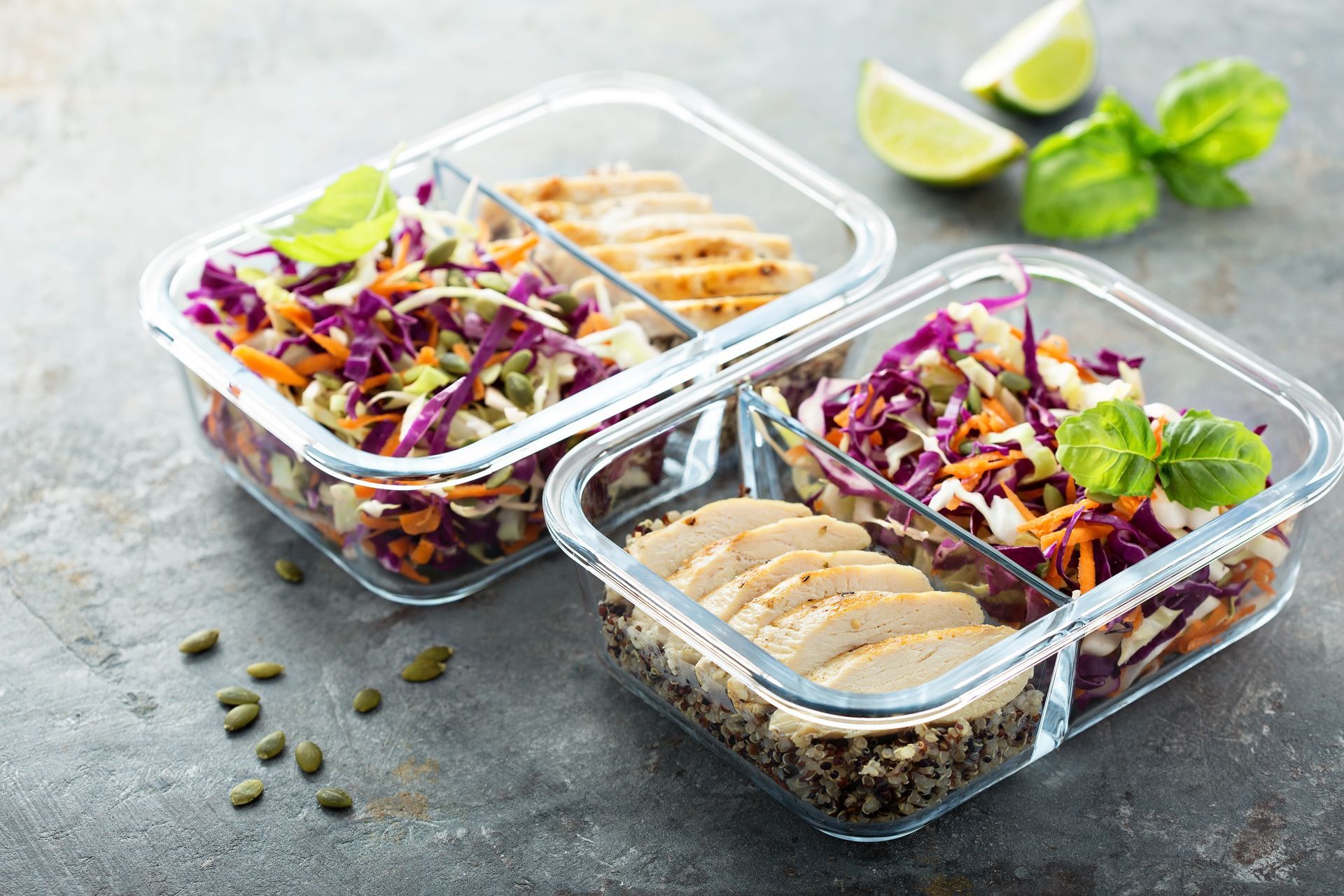A Guide on Scraping Physiotherapy: The Effects on Your Body
The A-Z About Scraping

Due to its remarkable effects on the human body, scraping physiotherapy has been capturing the attention of both healthcare professionals and individuals like you who are seeking natural remedies for their ailments.
For Traditional Chinese Medicine (TCM) practitioners, this practice is often employed to alleviate pain, promote recovery, and restore overall well-being. Today, scraping physiotherapy is recognised for complementing modern medical treatments.
If you're considering scraping physiotherapy, this article will enrich your understanding of the treatment alongside its impact on the human body.
Brief History of Scraping Physiotherapy
Scraping physiotherapy, known as gua sha, is a traditional treatment used by generations. The term is derived from two Chinese characters, “gua”, meaning to scrape and “sha”, referring to the red, petechiae-like marks on the skin during the treatment.
It is based on TCM principles, which view health as a balance of vital energy or “qi” flowing through meridians or energy channels in the body. As such, gua sha promotes the flow of qi, blood, and body fluids while removing stagnation and toxic elements.
Over time, the practice has evolved and integrated into modern healthcare practices, especially in physiotherapy. As the popularity of complementary and alternative medicine grew, gua sha gained attention for its potential therapeutic benefits.
In modern physiotherapy, scraping techniques have been adapted and refined to complement evidence-based practices. For instance, Absolute Wellness uses gua sha as an alternative and complementary treatment to conventional physiotherapy.
Types of Scraping Physiotherapy
Scraping physiotherapy encompasses various techniques used in traditional and modern healthcare practices. These techniques differ in their instruments, application, and intended therapeutic effects. Below are two types of scraping physiotherapy:
Gua Sha
This technique generally involves using smooth-edged tools made from materials like stone or metal. Before the treatment, the practitioner will apply oil or lotion to your skin and scrape it in long strokes along the meridians or specific areas of your body. This helps to release stagnant qi and blood to promote healing and weight loss.
Instrument-Assisted Soft Tissue Mobilisation (IASTM)
This type of scraping physiotherapy combines gua sha with soft tissue mobilisation technique. The practitioner uses instrument-assisted scraping and hands-on manipulation to treat myofascial restrictions, adhesions, and scar tissue. This helps to improve tissue flexibility, increase range of motion, and reduce pain.
How Scraping Physiotherapy Works
Scraping physiotherapy affects the body through various mechanisms, contributing to its potential therapeutic benefits. Here's how scraping physiotherapy works and its impact on the body:
- Increase Blood Flow and Circulation
Applying pressure and friction to the skin leads to the dilation of blood vessels in the treated area. This increases blood flow to the targeted tissues, promoting oxygen and nutrient delivery to cells while encouraging weight loss.
Improved circulation also helps to remove metabolic waste products and toxins from the tissues. At the same time, the increased blood flow can enhance the body's natural healing processes, accelerate tissue repair, and reduce inflammation. - Reduce Muscle Tension and Pain
Scraping physiotherapy targets muscle tension, trigger points, and myofascial restrictions. As such, the scraping action can help release muscle knots and tension by disrupting adhesions and breaking down fascial restrictions.
This results in muscle relaxation, reducing pain and discomfort. Additionally, the stimulation of nerve endings during the scraping process may trigger the release of endorphins, which are natural pain-relieving chemicals in the body. - Break Up Scar Tissue and Adhesions
Scar tissue and adhesions can form in the body due to injuries, surgery, or chronic inflammation, which can restrict joint mobility and cause pain. With scraping physiotherapy, it helps to break and remodel the scar tissue.
At the same time, this process encourages collagen remodelling and realignment of tissues, leading to improved mobility and range of motion. - Promote Lymphatic Drainage and Detoxification
The scraping technique can stimulate the lymphatic system, which is crucial in the body's immune response and waste removal. Scraping the skin in a specific manner encourages lymphatic fluid flow, promoting drainage and detoxification.
Additionally, this process encourages weight loss and reduces swelling and oedema in the tissues, especially in cases of musculoskeletal injuries or post-surgery recovery.
Conditions Treated with Scraping Physiotherapy
While scraping physiotherapy is a versatile technique that can be used to treat various conditions, it should only be performed by qualified healthcare professionals. The following are several conditions that can be treated with scraping physiotherapy:
- Pain Management
Scraping physiotherapy is commonly used for pain management in acute and chronic musculoskeletal conditions. It can relieve pain for conditions such as neck pain, back pain, shoulder pain, tennis elbow, golfer's elbow, and knee pain. - Rehabilitation
Athletes and individuals recovering from sports injuries or surgeries can benefit from scraping physiotherapy. The technique aids in breaking down scar tissue, adhesions, and fascial restrictions, accelerating healing and improving overall mobility. - Digestive Conditions
In TCM, gua sha can help address digestive issues like bloating and constipation. When applied to the abdomen, it can promote qi and blood flow to the digestive organs, aiding in proper digestion while encouraging weight loss.
What to Expect During a Scraping Physiotherapy Session
You can expect to experience some of the following during a scraping physiotherapy session at Absolute Wellness:
- Preparation of the Body
Before the session, the practitioner will prepare your body for the treatment. This may involve warming up the muscles and tissues to enhance blood circulation and tissue flexibility. The practitioner may also apply oils or lotions to the skin to reduce friction and ensure smooth movement of the scraping instrument. - Application of Scraping Physiotherapy Techniques
During the session, the practitioner will apply certain tools and techniques over targeted areas, using lengthy, downward strokes of controlled pressure. They may work along the meridians or focus on specific areas. - Sensations During the Session
You may also experience sensations like mild discomfort and warmth during the scraping physiotherapy session. These sensations are expected during the session. If you feel the treatment pressure is too intense, convey your discomfort to the practitioner. - Duration of the Session and Recommended Treatments
The duration of a session can vary depending on the area being treated. The number of treatments recommended will depend on your response to the therapy. We recommend you schedule your sessions twice weekly. - Aftercare Instructions
After a scraping physiotherapy session, patients are usually given aftercare instructions to optimise the benefits of the treatment and support their recovery. Some common aftercare instructions include getting adequate rest, staying hydrated, and avoiding extreme temperatures.
While your experiences with scraping physiotherapy may vary, it's essential to communicate openly with the practitioner about any concerns or sensations experienced during the session.
Scraping Physiotherapy Safety and Precautions
Although scraping physiotherapy is considered safe when performed by qualified professionals, there are some safety precautions that should be adhered to. This includes:
- Petechiae – After your session, you may notice red or purple marks on your skin. These marks are a normal response to the treatment and will usually fade within a few days.
- Sensitive Skin – Individuals with sensitive or easily irritable skin may experience mild skin irritation or redness following the treatment. The use of lubricants and proper techniques can help minimise this risk.
- Discomfort – The scraping technique involves applying pressure to your skin, which can cause mild discomfort, especially over tender or injured areas. However, this discomfort should not be severe or cause lasting pain.
At Absolute Wellness, you can be assured that our Scraping Therapy will have minimal side effects, ensuring a comfortable session all the way through.
Contradictions for Scraping Physiotherapy
There are certain conditions and situations where scraping physiotherapy may not be recommended or should be avoided:
- Open Wounds – Scraping should not be performed on areas with open wounds, cuts, or skin infections, as it can increase the risk of infection and slow down the healing process.
- Sunburned or Irritated Skin
– Areas of the skin that are sunburned, inflamed, or irritated should be avoided to prevent further damage or discomfort.
- Bleeding Disorders – Individuals with bleeding disorders or taking blood-thinning medications should avoid scraping physiotherapy due to the increased risk of bruising and bleeding.
- Pregnancy – Pregnant individuals should exercise caution, and scraping physiotherapy should be performed by practitioners experienced in treating pregnant clients, especially around the abdomen and lower back.
- Varicose Veins – Scraping should be avoided over areas with varicose veins, as it can exacerbate the condition.
It's essential to disclose any medical conditions or concerns to the practitioner before the session to ensure safety and suitability.
Tips for Choosing a Professional Scraping Physiotherapy Practitioner
To ensure a safe and effective scraping physiotherapy session, consider the following tips when choosing a practitioner:
- Qualifications and Credentials – Look for a practitioner who is a licensed physiotherapist, certified in scraping physiotherapy, or trained in relevant techniques.
- Experience – Seek out practitioners with experience in treating your specific condition or concern.
- Client Reviews and Testimonials – Check client reviews and testimonials to gauge the quality of the practitioner's services and patient satisfaction.
- Consultation – Before the session, the practitioner should conduct a thorough consultation to understand your medical history, current health status, and treatment goals.
By choosing a qualified and experienced practitioner, you can enhance the safety and effectiveness of your scraping physiotherapy session while minimising potential risks.
About Absolute Wellness
If you’re looking for a safe and natural long-term solution to weight loss, consider our scraping physiotherapy. It helps stimulate blood flow and encourage weight loss safely and naturally.
Additionally, this treatment can supercharge your
metabolism for weight loss when combined with sensible eating and sufficient rest.
Since 2002,
we have helped thousands of individuals achieve their ideal weight with a 99 per cent success rate. Make the first step and
book a consultation today.
Related Articles
For more information, contact us:
Dhoby Ghaut
+65 6509 9123
Bugis
+65 6242 3287
Or send in an enquiry:
Contact Us
We will get back to you as soon as possible.
Please try again later.
For more information, contact us:
Dhoby Ghaut
Bugis
+65 6242 3287
Or send in an enquiry:
Contact Us
We will get back to you as soon as possible.
Please try again later.
Book an Appointment
Book Appointment Form
We will get back to you as soon as possible.
Please try again later.
Our Locations
All Rights Reserved | Absolute Wellness | Privacy Policy



